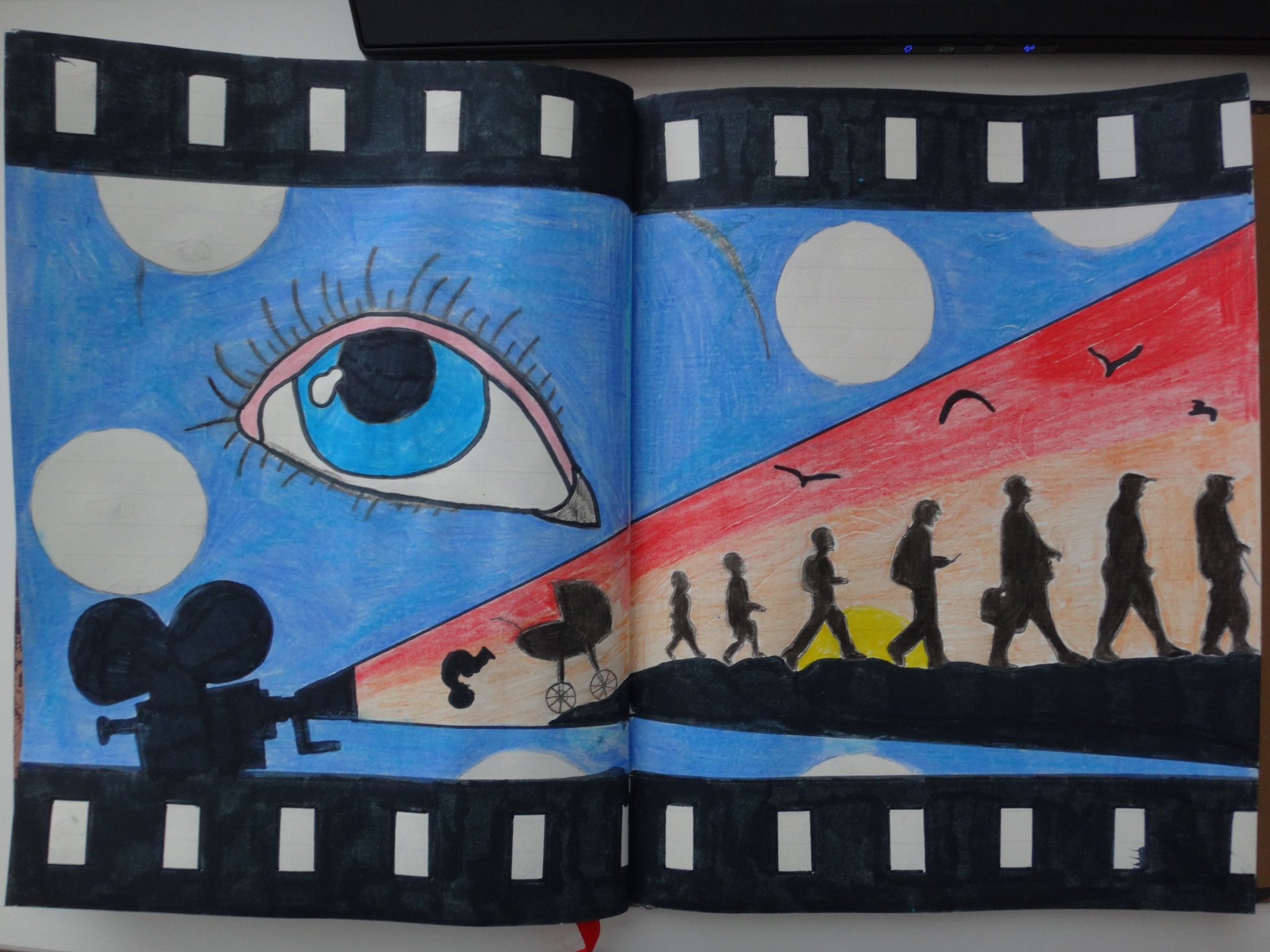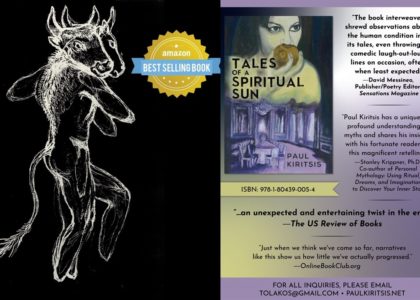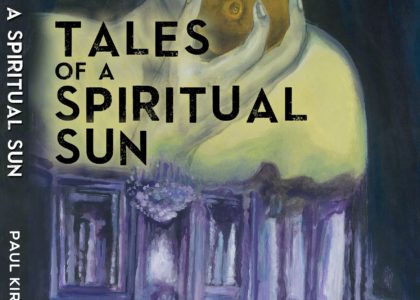
Desire for subsistence and inherent meaning is a driving force to be reckoned with, and its sheer value and aptitude in being able to relegate our perceived differences to the wastebasket of triviality is reflected in the cross-cultural immanence of oral and written myth in bygone civilizations and through Hollywood movies, television serials, genre fiction, and pop magazines in the contemporary developed world. We are something more than a bundle of psychobiological compulsions strung together by habit; we are the meaningful, feel-good narratives we tell ourselves about our supposed indestructibility and immutability for the sake of mitigating stress; for grounding experience in a time-dependent, sequential framework; for adhering to goal-oriented direction; and for creating appropriate context for movement to self-definition (Cozolino, 2010).
Without a doubt, we come to know conscious and unconscious aspects of the self (Snyder, 1998), our competences and limitations, our motivations, and our hopes and aspirations through narrative. Self-identity is at the core of narrative gravity (Dennett, 1991) and transpersonal experiences can deeply influence that gravity. During one’s lifetime, the cognitive barometer defining what transpersonal experiences actually are and how they fit into and impact one’s personal and professional life will be modulated by a dynamic circle of beliefs connected to one central narrative. In the present chapter of my own psychospiritual development, I take it that their role is to authenticate the ethical and moral nature of the universe and, by extension, offer an incentive for utilitarian goal-directed action in society.
one central narrative. In the present chapter of my own psychospiritual development, I take it that their role is to authenticate the ethical and moral nature of the universe and, by extension, offer an incentive for utilitarian goal-directed action in society.
I, for one, identify powerfully with a dramatic version of the Gnostic myth whereby the Pleroma is described as a spiritual realm in which the Immortal beings ruminate in an undefiled state. These spiritual authorities who dwell there are Pistis-Sophia―the primordial mother goddess and feminine counterpart to the androgynous Godhead―and also her consort, the Great Father, plus their two children, Sophia and Christ. Sophia was the feminine figure of wholly divine wisdom that gave birth to the spiritual and material ages and a series of in-between dimensions. The split birthed the evil archon Yaldabaoth who, by repeating the creation process as enacted by his mother, formed the physical world; and secondly, it entangled the daughter Sophia in folds of defiled matter to the extent that she forgot about her divine routes. Trapped in a dark, chaotic realm and unable to remember her true purpose, Sophia meandered helplessly about watching the conceited Demiurge as he destroyed the souls of human beings. Unable to help them, she became forlorn and distressed to the point where her emotions could no longer be contained. In one long, continuous exhalation, Sophia issued a cacophonous shriek that pierced the gates presided over by the planetary spirits of the in-between dimensions and reached as far as the domain of her parents in the Pleroma. The Virgin Mother Sophia aptly responded by ordering her son, Christ, to descend the rungs leading to the lower worlds and rescue his sister from the embroilment in matter by conferring upon her the timeless gnosis that came from without. Humankind, too, was saved as a consequence.
exhalation, Sophia issued a cacophonous shriek that pierced the gates presided over by the planetary spirits of the in-between dimensions and reached as far as the domain of her parents in the Pleroma. The Virgin Mother Sophia aptly responded by ordering her son, Christ, to descend the rungs leading to the lower worlds and rescue his sister from the embroilment in matter by conferring upon her the timeless gnosis that came from without. Humankind, too, was saved as a consequence.
Why this Gnostic myth and not some other? Simply because it precipitates qualitative connections between the most important preoccupations, milestones and autobiographical events in my life along with one vital metaphysical experience during my childhood, couching them within a quixotic contextual framework in the way that innumerable pearls are threaded together into an expensive necklace. For instance as an eight-year-old, I perceived what appeared to be a giant swallowtail butterfly standing motionless before the rotary washing line in the rectangular backyard of my Hickford Street residence. It maintained an unnatural posture, its supernal wings outstretched for a few minutes before vanishing into thin air. This I interpret as accidental intrusion from the Pleroma.
between the most important preoccupations, milestones and autobiographical events in my life along with one vital metaphysical experience during my childhood, couching them within a quixotic contextual framework in the way that innumerable pearls are threaded together into an expensive necklace. For instance as an eight-year-old, I perceived what appeared to be a giant swallowtail butterfly standing motionless before the rotary washing line in the rectangular backyard of my Hickford Street residence. It maintained an unnatural posture, its supernal wings outstretched for a few minutes before vanishing into thin air. This I interpret as accidental intrusion from the Pleroma.
On the other hand the most significant moment in my formative development was a dark day in my early teens when I underwent a malady of unknown origin. The primary quality of this polymorphous condition was an intrinsic subjective experience of not feeling well within myself that lasted decades. In hindsight, I’d rate it as the most traumatic moment in my life. In the last seven years, it began to occur to me (in a figurative sense) that the illness wasn’t something physicians, neurologists, immunologists, and psychiatrists could shed any light upon at the time since it was supernatural in origin, a ‘conversion’ imposed by a higher order of spiritual beings as a way of emancipating me from my corporeal slumber and impelling me to the investigation of paraphysical dimensions not detectable or amenable to human perception. Bequeathed with the opportunity to interpret or re-interpret what has gone before, our minds spontaneously exhume personalized archetypal narratives which present the contextual self in the best possible light. Such is the need of the left hemispheric interpreter to make sense out of nonsense and preserve fundamental harmony and faith in our lives.
On another note, the left hemispheric interpreter responsible for rational analysis, problem-solving, judgment, and cognitive schemata on the whole does an effectual job assimilating only experiential data and stimuli concordant with our narrative matrices. Congruent with my unconscious adoption of the Gnostic myth, the last ten years of my life have been spent actively perusing the manifest universe for empirical evidence of our divine origins in the Pleroma. The fact that we suffer from a self-induced amnesia is reflected robustly in neuroscience’s inability to pinpoint neural ‘correlates’ for human intentionality, thought, and action; in creative faculties which translate subjective mental images into objective concrete facts and experiences; and, moreover, in the implausibility that the mechanistic quantitative processes
perusing the manifest universe for empirical evidence of our divine origins in the Pleroma. The fact that we suffer from a self-induced amnesia is reflected robustly in neuroscience’s inability to pinpoint neural ‘correlates’ for human intentionality, thought, and action; in creative faculties which translate subjective mental images into objective concrete facts and experiences; and, moreover, in the implausibility that the mechanistic quantitative processes of natural selection could ever engender self-aware creatures with mentalistic capacities for descrying a reality beyond initial appearances through reason.
of natural selection could ever engender self-aware creatures with mentalistic capacities for descrying a reality beyond initial appearances through reason.
Subtler traces may be found in the nocebo effect, whose raw, colossal powers is most evident in the indigenous cultures of the world where social transgressions sometimes result in physical illness or even acute psychogenic death; the placebo effect which speaks volumes for the power of suggestion, especially when it comes from an individual perceived by the patients as a commanding authority, a God-figure if you like; spontaneous remission facilitated by the placebo, whereby the healing of medical conditions has more to do with unwavering trust in the process rather than any quantifiable change in biochemical systems; and hypnosis , a technique which can instigate paralogical submission to a reality facilitated verbally by an external narrator, a reality defined by declarations about people, the world, and its processes taken at face value. Moreover, “psi” phenomena like telepathy, telekinesis, clairvoyance, and precognition, and other mind-matter interaction phenomena like fire-immunity, transformation and multiplication of matter (alchemy), inedia, stigmata, and luminosity are also redolent of the fact that we are “greater than” a bundle of cognitions, emotions, behaviors, senses, instincts, and physical matter mediated by “attractor states.” It appears the cognitive sieves have been operating at optimum levels!
, a technique which can instigate paralogical submission to a reality facilitated verbally by an external narrator, a reality defined by declarations about people, the world, and its processes taken at face value. Moreover, “psi” phenomena like telepathy, telekinesis, clairvoyance, and precognition, and other mind-matter interaction phenomena like fire-immunity, transformation and multiplication of matter (alchemy), inedia, stigmata, and luminosity are also redolent of the fact that we are “greater than” a bundle of cognitions, emotions, behaviors, senses, instincts, and physical matter mediated by “attractor states.” It appears the cognitive sieves have been operating at optimum levels!
At present transpersonal and spiritual experiences play a specific role in my cosmology as cross-cultural phenomena which speak vociferously to the day-to-day practice of leading a moral, ethical life. In Revisioning Transpersonal Theory (2002), Ferrer’s emancipatory turn separates the aforesaid from their protracted experiential moorings in Cartesian-Kantian empiricism and recasts them as multifocal epistemic events governing the natural world from within, events “that can emerge not only in the locus of an individual, but also in a relationship, a community, a collective identity, or a place (Ferrer, 2002, pp. 3).” Undisputed credence for this conviction exists if we take into account interactive and interrelated features of the community of individuals who have psychic openings and voluntarily engage in telegnostic projection. Fundamental to their disposition is nonjudgmental connection, disassociation from sociocultural conditioning and individual ego identity, wilful suspension of the intellect, peak playfulness, mutuality, focused awareness, trust in the process, a sense of “knowing”, and openness to experience.
It appears these people participate in reality through a hermeneutics of the heart and the implicit qualities themselves, as Tarnas (1998) pointed out in his evocatively illustrated thought experiment, are like vibrant sunlight, heartening the ensouled universe to unveil its deepest mysteries. If we, as intelligent ‘suitors’, can establish a consensus about which moral path precipitates participation in self-disclosure of the cosmos’s being, then shouldn’t it also hold that ethics, a higher principle guiding how we should act, respond, and relate to one another, is probably more of a judgement-independent truth like mathematics, logic, and scientific intelligibility rather than a human construction per se. Ethics, in effect, could be an aspect of the objective timeless domain governing micro- and macroscale development via teleological laws over time. Embraced in such a transcendent way, this form of self-understanding imbues cross-cultural philanthropic practices involving selfless sacrifice and service (i.e. “being of service to our fellow human beings” or “giving freely of your own self to others”) with deepest meaning so that they reflect something greater than personal choice. And, in retrospect what could truly be greater than a harmonious alignment with the ethically-governed psychophysical principles of nature? For me, Ferrer’s participatory vision of human spirituality has been a catalyst for this phenomenal revelation.
To sum up, powerful narratives bequeath deepest meaning-making in both my personal and professional life. The proactive creation, re-creation, and co-creation of personal stories sheds light upon how I self-identity, how I embody and rationalize an interconnected, dynamic sphere of personal dispositions, beliefs, and goals, and how I relate to others and the cosmos at large. Operating on an unconscious level, my Neo-Gnostic cosmology provides for affect regulation during moments of anxiety, stress, and emotional pain while concurrently making possible the contextual space necessary for movement to self-actualization. At present, that contextual space construes transpersonal phenomena as nonlocal epistemic events speaking in support of a benevolent and ethical universe whose intrinsic principles are defiled by the absolutist ideal of spiritual hierarchies and whose deep structure is incompatible with the human socio-political construct of dominating-dominated power relations. The cosmic message, it seems, is something to the effect of, “de-condition yourselves, connect, honor, and be free.” As Ferrer illuminates in his interpretative commentary of Tarnas’ experiment, love and cosmic trust must trump domination and suspicion (pp. 174) at all costs. Moving forward, I would say our personal and collective narratives must straddle the line between self-adoration and selflessness, self-care and service, if we wish transcend our limitations and become “greater than” the sum of our parts.
References
Cozolino, L. (2010). The Neuroscience of psychotherapy: Healing the social brain (Norton Series on Interpersonal Neurobiology). WW Norton & Company.
Dennett, D. C. (1991). Consciousness explained. Boston: Little, Brown.
Ferrer, J. N. (2002). Revisioning transpersonal theory: A participatory vision of human spirituality. Suny Press.
Snyder, B. A. (1997). Expressive art therapy techniques: Healing the soul through creativity. The Journal of Humanistic Education and Development, 36(2), 74-82.
Tarnas, R. (1998). The great initiation. Noetic Sciences Review, 47, 24-31, 57-59.









